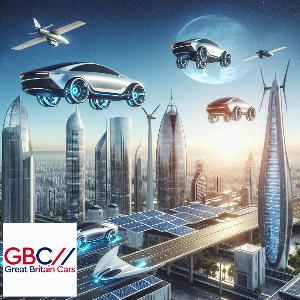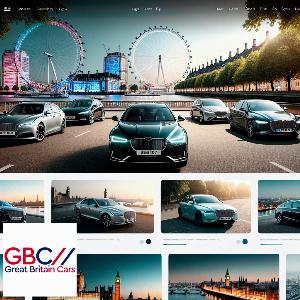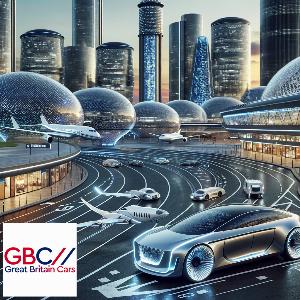Air Minicabs: A Look into the Future of Travel

Concept of Air transfers
Air transfers, a concept once confined to the realm of science fiction, are now on the brink of becoming a reality. This innovative mode of transportation promises to revolutionize the way we travel, offering a solution to the ever-increasing problem of urban congestion. Air transfers are essentially small, electric aircraft designed to carry a handful of passengers over short distances within a city. They operate on the principle of vertical take-off and landing (VTOL), eliminating the need for runways. Companies like Uber and Airbus are already investing heavily in this technology, envisioning a future where commuters can simply hail an air transfer to bypass traffic and reach their destination swiftly. While there are still hurdles to overcome, including regulatory approval and public acceptance, the potential benefits of air transfers are undeniable. They could drastically reduce travel times, lower carbon emissions, and even create new jobs in the aviation industry. Indeed, air transfers could very well be the future of urban travel.
Technological Requirements for Air transfers
Air transfers, a concept once confined to the realm of science fiction, are now on the brink of becoming a reality. This revolutionary mode of transportation, however, comes with a unique set of technological requirements. Firstly, air transfers need to be electric to reduce noise and air pollution, necessitating advancements in battery technology. Secondly, they must be capable of vertical take-off and landing (VTOL) to operate in urban environments, which requires innovative engineering solutions. Thirdly, they need to be autonomous to ensure safety and efficiency, demanding breakthroughs in AI and machine learning. Additionally, a robust air traffic management system is crucial to prevent mid-air collisions. Lastly, infrastructure such as 'vertiports' for take-off and landing needs to be developed. The realization of air transfers hinges on these technological advancements, promising a future where travel is not just faster, but also cleaner and safer.
Leading Companies in Air transfer Development
Air transfers, the future of urban mobility, are being developed by leading companies worldwide. Uber Elevate, a division of Uber, is pioneering the concept of shared air transportation. They aim to launch their air transfer service, Uber Air, by 2023. Another key player is Joby Aviation, a California-based company that recently acquired Uber Elevate. They have been developing a five-seater electric air transfer and have raised over $700 million in funding. Meanwhile, German company Volocopter is also making strides with their VoloCity air transfer, designed for urban air mobility. They have successfully conducted several test flights and aim to start commercial operations within the next two to three years. Lastly, Lilium, another German company, is developing a five-seater jet-powered air transfer. These companies are leading the charge in air transfer development, promising a future where travel is not only faster but also more sustainable.
Regulatory Challenges for Air transfers
Air transfers, a futuristic concept of urban mobility, are poised to revolutionize the travel industry. However, they face significant regulatory challenges that could hinder their widespread adoption. The primary concern is safety. Regulators must ensure that these flying vehicles can safely navigate urban landscapes, avoid other aircraft, and handle emergency situations. Additionally, noise pollution is a significant concern. Air transfers must be quiet enough to operate in densely populated areas without causing disturbances. Infrastructure is another hurdle. Cities would need to develop vertiports for takeoff and landing, which requires significant investment and urban planning. Lastly, air traffic control systems would need to be updated to accommodate the increased traffic. Despite these challenges, the potential benefits of air transfers, such as reduced traffic congestion and faster travel times, make them an exciting prospect for the future of travel. However, it is clear that significant regulatory progress must be made before they become a reality.
Economic Impact of Air transfers
Air transfers, a futuristic concept of urban mobility, are poised to revolutionize the travel industry. The economic impact of this innovation is expected to be substantial. According to a report by Morgan Stanley, the air transfer market could be worth $1.5 trillion by 2040. This new mode of transportation could significantly reduce travel time, increase productivity, and contribute to economic growth. It could also create new jobs in manufacturing, operations, and service sectors. However, the development and implementation of air transfers also pose challenges. Infrastructure development, regulatory approvals, and public acceptance are key hurdles that need to be overcome. Despite these challenges, the potential economic benefits of air transfers are immense. They could transform urban landscapes, boost economic activity, and pave the way for a new era of travel. As we look into the future, air transfers could become a common sight, changing the way we perceive and experience travel.
Environmental Impact of Air transfers
Air transfers, a futuristic concept of travel, are poised to revolutionize our commuting methods. However, their environmental impact is a subject of intense debate. On one hand, air transfers promise to reduce traffic congestion, thereby decreasing the carbon emissions from traditional road vehicles. They are also expected to be electric, which means they would produce zero emissions during flight. However, the environmental cost of producing and maintaining these electric air transfers, as well as the infrastructure required to support them, could be significant. Additionally, the energy required to power these transfers could still come from non-renewable sources, negating some of their environmental benefits. Furthermore, the noise pollution produced by these vehicles could also have a detrimental impact on wildlife. As we look towards the future of travel, it is crucial that we consider these environmental implications and strive to develop sustainable solutions.
Potential Markets for Air transfers
Air transfers, a concept once confined to the realm of science fiction, are now on the brink of becoming a reality. As we look into the future of travel, several potential markets emerge for this innovative mode of transportation. Urban areas with heavy traffic congestion stand to benefit immensely from air transfers. Cities like Los Angeles, New York, and Beijing could use air transfers to alleviate road congestion and reduce travel times significantly. Tourist hotspots are another potential market. Imagine flying over the Grand Canyon or the Great Barrier Reef in an air transfer, offering a unique perspective to sightseers. Furthermore, air transfers could revolutionize emergency services. Quick aerial transport could mean the difference between life and death in critical situations. Lastly, the business sector could utilize air transfers for swift and efficient travel between meetings in different cities. In conclusion, the potential markets for air transfers are vast and varied, promising a future where travel is not just faster, but also more exciting and efficient.
Public Perception of Air transfers
Air transfers, a concept once confined to the realm of science fiction, are now on the brink of becoming a reality. However, public perception of this futuristic mode of transport remains mixed. While some view air transfers as a revolutionary solution to urban congestion and a step towards sustainable travel, others express concerns over safety, noise pollution, and affordability. The potential of air transfers to drastically reduce travel time and transform urban mobility is undeniable. They promise a future where commuting is no longer a time-consuming chore but a swift, enjoyable experience. However, for this vision to materialize, the industry must address the public's safety concerns. Rigorous testing and transparent communication about safety measures will be crucial in gaining public trust. Moreover, the issue of noise pollution is another significant concern. The industry must ensure that air transfers do not contribute to noise pollution, which could negatively impact the quality of life in urban areas. Lastly, for air transfers to be a viable option for the masses, they must be affordable. In conclusion, while air transfers hold immense potential, their acceptance and success will largely depend on how these concerns are addressed.
Future of Air transfers
Air transfers: A Look into the Future of Travel The future of travel is set to take a dramatic turn with the advent of air transfers. These futuristic vehicles, designed to transport passengers across city skylines, are poised to revolutionize the way we commute. Companies like Uber and Airbus are already investing heavily in this technology, envisioning a world where traffic congestion is a thing of the past. Air transfers are not just a concept anymore; they are becoming a reality. With advancements in drone technology and autonomous flying, these vehicles are expected to be safer and more efficient than traditional modes of transportation. They will not only reduce travel time significantly but also contribute to a greener environment by cutting down on carbon emissions. However, there are still challenges to overcome, including regulatory hurdles and public acceptance. Despite these obstacles, the future of air transfers looks promising, heralding a new era in urban mobility.
Case Studies of Air transfer Implementation
Air transfers, a concept once confined to the realm of science fiction, are now becoming a reality. Several case studies have emerged showcasing the successful implementation of air transfers, offering a glimpse into the future of travel. In Dubai, the Roads and Transport Authority successfully tested the world's first autonomous air transfer, the Volocopter, in 2017. This two-seater, 18-rotor vehicle demonstrated the feasibility of using air transfers for urban transportation. Similarly, in Singapore, the German company Volocopter conducted a test flight of its air transfer in Marina Bay in 2019. The successful trial showcased the potential of air transfers in reducing traffic congestion in densely populated cities. In the US, Uber has been developing its air transfer service, Uber Air, with plans to launch commercial operations in 2023. The company has conducted several successful test flights, demonstrating the viability of air transfers in a real-world environment. These case studies highlight the potential of air transfers in revolutionizing urban transportation, making travel faster, more efficient, and more exciting. The future of travel is indeed looking up.
Our Latest Blog Posts

Couples Retreat: Romantic Airport Minicabs in London
Blog about Couples Retreat: Romantic Airport Transfers in London

Efficient Travel: From Luton to Londons Business Hubs
Blog about Efficient Travel: From Luton to Londons Business Hubs

Exploring the British Isles: Unique Road Trips from Londons Airports
Blog about Exploring the British Isles: Unique Road Trips from Londons Airports
Blogs Pages
Heathrow to the Gateway of the West Country: Somerset and Beyond
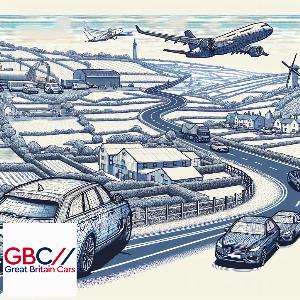
Blog about Heathrow to the Gateway of the West Country: Somerset and Beyond...
Heathrow to Brightons Beaches and Piers: A Seaside Escape
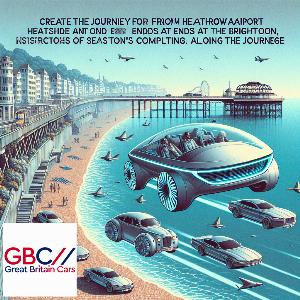
Blog about Heathrow to Brightons Beaches and Piers: A Seaside Escape...
Our Clients Testimonials

Strong and kind
The driver was no doubt, solid areas for strong kind .His method for managing acting was absolutely great.
Harris





Best opportunity
The driver was no doubt reliable, strong and kind .His approach to acting was just wonderful.
Logan





Great service
It is very great service and it's also reliable and on time always. I am really impressed by it.
Aana





Reliable
The driver was so reliable and shown up at in authentic time which was so fantastic.
Abigial





Excellent cab service
I am really inspired by this Great Britain Cars cab service. It's a best platform.
Thomas





Cleanliness
The vehicle is generally around stayed aware of and cleaned . It was particularly fair.
Ryan





Great pick ups
They jolt of energy on the specific time. They give totally best.
Donald





Fair qualities
It has fair qualities, kind , well mannered ,conversational and extremely supportive driver.
Sophia





Punctual
The driver was so punctual and reached in proper time which was so good.
Elizabeth





Shocking skill
Astoundingly fit and trustful drivers they have . We will utilize this later on.
Lopez





Politeness
They have very politeness .They are truly friendly in nature.
Nelson





Solid and kind
The driver was no question, areas of strength for solid kind .His way to deal with acting was simply awesome.
Wright





Easy approach
Booking of Great Britain Cars cab is easiest and totally satisfying.
Daniel





High benefits
The vehicle is overall around stayed aware of and cleaned . It was particularly fair.
Miller





Fundamental booking
Fundamental booking and the driver was on time , mindful and solid.
Jackson





Surprising assistance
It is astoundingly incredible assistance and it's likewise dependable and on time generally. I'm truly astonished by it.
Clark





On time
Easy booking and the driver was on time , courteous and helpful.
Samuel





Fair attributes
It has fair attributes, kind , pleasant ,conversational and unbelievably solid driver.
Hill





Maintenance
The vehicle is well maintained and cleaned . It was very fair.
Joseph





Good pick ups
They pick me up on the exact time. They provide absolutely best.
Adams




